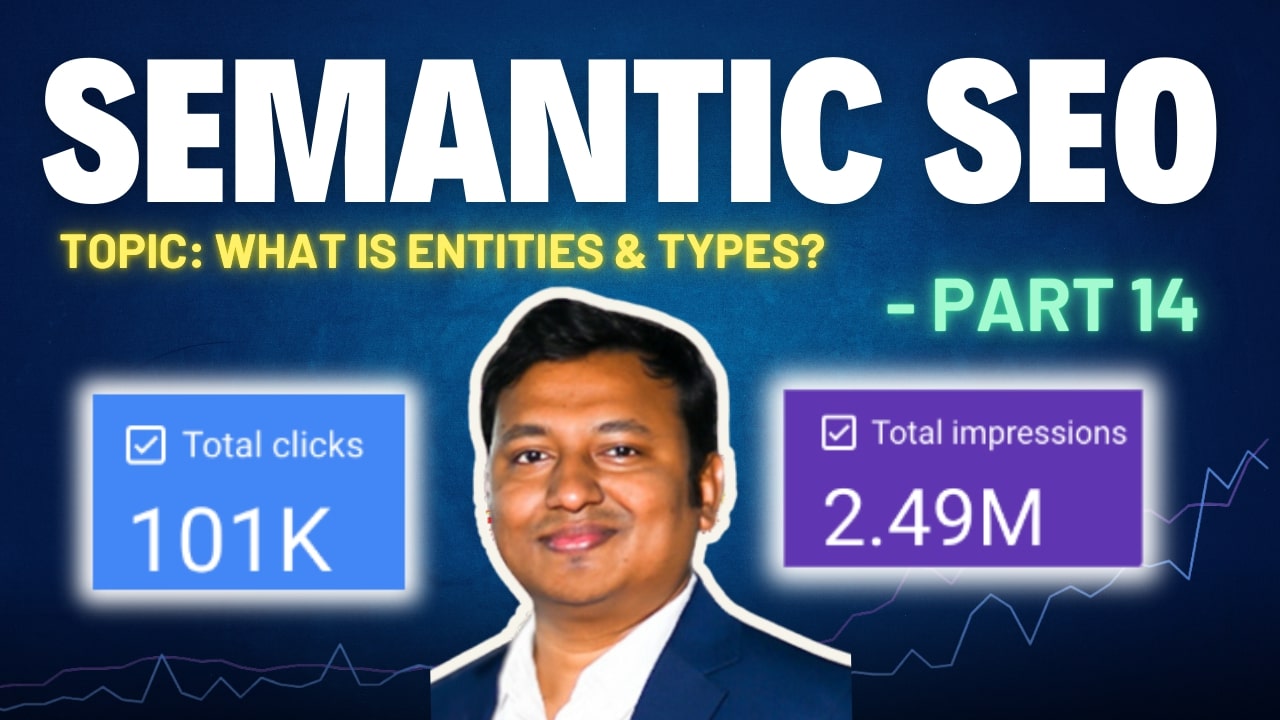In the context of Semantic SEO, entities are the building blocks of machine understanding.
An entity is a uniquely identifiable thing or concept—something that exists and can be distinguished from others.
Unlike keywords, which are mere strings, entities are things. Search engines no longer match just words—they match meanings.
This is the foundation of:
- Google’s Knowledge Graph
- Google’s Natural Language API
- Featured Snippets, Voice Search, SGE, and AEO
If you’re still optimizing content around keywords alone, you’re optimizing for a pre-2012 Google. Post-Hummingbird, entities are the new SEO currency.
What is Entity? (Definition + Components)
Definition of Entity:
An entity is any uniquely distinguishable person, place, object, concept, or event, often represented with a unique ID.
Components of an Entity:
- Name – The literal label (e.g., “Barack Obama”)
- Type – The category or class (e.g., “Person”)
- Attributes – Data points (e.g., Date of Birth, Nationality)
- Relationships – How it connects to other entities (e.g., “Member of Queen”)
Example:
- Freddie Mercury – Name
- Type – Person
- Relation – Member of Queen (Band)
- Attribute – Date of Birth: 1946
Each sentence becomes a triple (tuple): Subject → Predicate → Object
Freddie Mercury → isMemberOf → Queen
Bohemian Rhapsody → wasWrittenBy → Queen
These triples are the language of the Semantic Web.
Examples of Entity Types
| Type | Examples |
|---|---|
| Person | Albert Einstein, Elon Musk, Barack Obama |
| Organization | Google, WHO, NASA |
| Location | Paris, New York, Amazon Rainforest |
| Product | iPhone 14, Tesla Model S, CBD Oil |
| Event | World Cup 2022, Woodstock, Black Friday |
| Concept/Idea | Quantum Physics, Democracy, Meditation |
| Media | Bohemian Rhapsody (song), Interstellar (film) |
| Emotion/Feeling | Happiness, Anger, Excitement |
Google’s NLP API and OpenAI’s GPT models rely on entity linking for content classification, context extraction, and knowledge graph expansion.
ALSO READ …
- What is attribute and its types
- What is entity attribute value
- What is entity recognition in semantic
- What is structured data
- What is entity-based content
Entity Types and Subtypes: The Taxonomy Layer
An entity can belong to multiple types or subtypes:
| Entity | Primary Type | Subtype |
|---|---|---|
| Albert Einstein | Person | Scientist |
| Barack Obama | Person | Politician |
| Queen (band) | Organization | Music Band |
| Bohemian Rhapsody | Song | Music Composition |
| World War II | Event | Historical Event |
Type mapping improves semantic disambiguation—especially for ambiguous terms like “Michael Jordan” (Person, Brand, Basketball Player).
Why Entity Variations Matter
Machines don’t “understand” like humans.
We know that “WHO” and “World Health Organization” are the same.
Search engines need explicit signals.
Best Practice:
- Use entity variations in content:
- Full name: World Health Organization
- Acronym: (WHO)
- Synonym: UN Health Agency
Use the primary entity name first, then introduce variations. This ensures semantic coherence and helps with entity disambiguation.
Entity Attributes: Granular Metadata
Entities are enriched with attributes, which define their uniqueness.
Person Attributes:
- Name
- Birthdate
- Nationality
- Occupation
- Education
- Spouse
- Children
Organization Attributes:
- Name
- Industry
- Headquarters
- Founded Date
- Founders
- Subsidiaries
Example:
Albert Einstein → hasField → Theoretical Physics
Tesla Inc. → foundedBy → Elon Musk
This structured definition enables:
- Knowledge Graph integration
- NLP model training
- Disambiguation in SERPs
Entity Relationships: Web of Meaning
Relationships help Google create a knowledge graph of entities.
Each relationship forms a semantic edge connecting two nodes (entities).
Queen (Band) → wrote → Bohemian Rhapsody (Song)
Barack Obama (Person) → marriedTo → Michelle Obama (Person)
Apple (Org) → produces → iPhone (Product)
These links are semantic vectors—essential for:
- Contextual search
- Rich snippets
- Voice assistants
Practical Use in Content Creation
Step-by-Step for Semantic Entity Usage in Articles:
- Extract Primary Entities
- Use tools like TextRazor, Google NLP, NER
- Introduce Entity with Variations
- “Barack Hussein Obama (commonly known as Barack Obama)”
- Contextual Linking
- Add internal/external links to authoritative sources
- Structure around semantic relations
- Use Schema.org Types
- Add
@type: Person,@type: Organization, etc., in structured data
- Add
- Map Entity Relationships
- Use semantic triples in your sentence structure
- Avoid Keyword Stuffing
- Focus on entity richness, not term repetition
Tools to Extract and Annotate Entities
| Tool | Function |
|---|---|
| Google NLP | Entity extraction, sentiment, syntax |
| TextRazor | Named Entity Recognition + linking |
| SpaCy | Python NLP library for NER |
| Wikidata/Wikipedia | Open data source for entity linking |
| InLinks | Internal linking via entity-based SEO |
Advanced Insight: Entities and ID-Based Indexing
Search engines don’t just crawl keywords—they index entities with IDs.
Each entity has a unique identifier in the Knowledge Graph
For example:
- Barack Obama →
/m/02mjmr - Queen (Band) →
/m/06c54
When Google sees this ID in context, it knows exactly which “Queen” you’re referring to.
This removes ambiguity, enabling:
- More accurate SERPs
- Better E-A-T mapping
- Rich snippets and result clustering
Conclusion: Entity-First = Semantic SEO-Ready
“Keywords describe what humans type.
Entities define what search engines understand.”
Structured data, topical maps, internal links—everything in Semantic SEO hinges on entity recognition and relationships.
Entities are the atomic units of meaning in modern SEO.
If you fail to define, disambiguate, and relate entities correctly, you’ll lose to competitors who do.
Coming Next: Part 15: What Are Attribute Types in Semantic SEO? Understanding Entity-Attribute-Value Structures
Disclaimer: This [embedded] video is recorded in Bengali Language. You can watch with auto-generated English Subtitle (CC) by YouTube. It may have some errors in words and spelling. We are not accountable for it.
